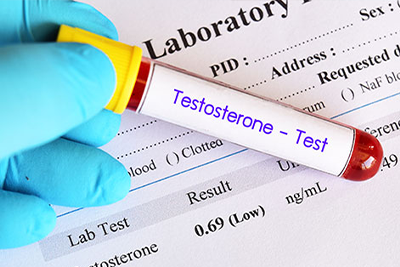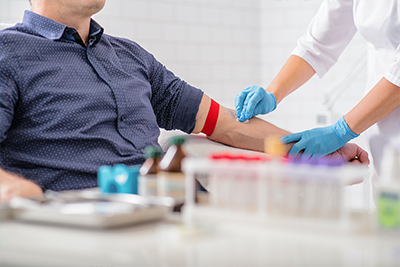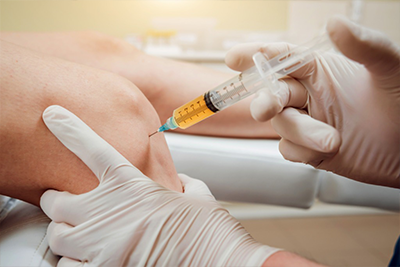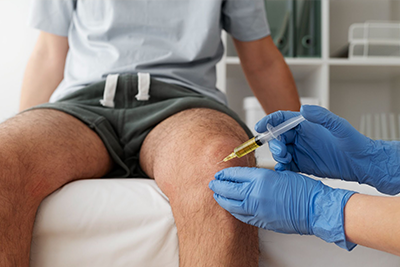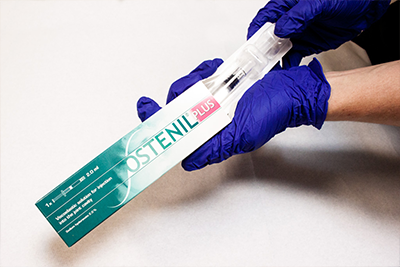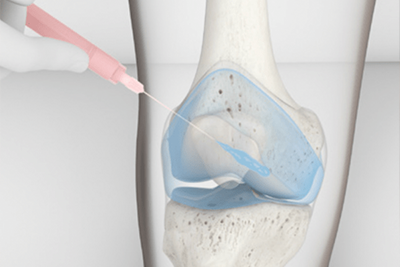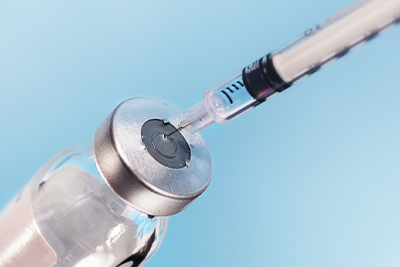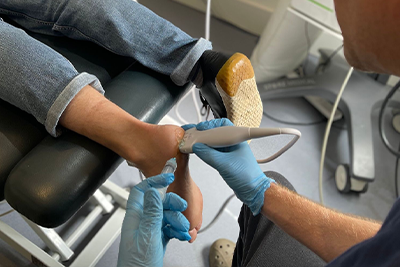Erectile dysfunction (ED) is a common health concern that affects men of all ages, though its prevalence increases with age. Characterised by the inability to achieve or maintain an erection sufficient for satisfactory sexual performance, ED can have significant psychological and relational impacts. It’s estimated that millions of men worldwide experience this condition, with varying degrees of severity. Despite its prevalence, many cases go unreported due to the stigma and embarrassment associated with discussing sexual health issues.
To address ED early and more privately, self-testing has emerged as a valuable first step for many men. Self-tests for ED offer a discreet way to identify potential erectile problems before seeking professional medical advice. These tests, which can be performed in the privacy of one’s home, are designed to help men recognise the symptoms of ED and gauge the severity of their condition. While not a substitute for a comprehensive evaluation by a healthcare provider, self-testing for ED can be an effective preliminary measure, providing men with the insight needed to take the following steps towards diagnosis and treatment.
Erectile Dysfunction Recap
Erectile dysfunction (ED) is a medical condition characterised by the consistent inability to achieve or maintain an erection sufficient for satisfactory sexual intercourse or activity. This condition, affecting a significant portion of the male population, can stem from various physical and psychological causes.
Common Causes of ED:
Physical Causes:
Cardiovascular diseases are among the leading physical contributors to ED, as they can impair blood flow to the penis. Diabetes, high cholesterol, and hypertension can also lead to erectile dysfunction by affecting the nerves, blood vessels, and muscle function necessary for an erection.
Psychological Causes:
Mental health issues such as stress, anxiety, and depression can significantly impact erectile function. The psychological state can influence libido, and stress can interfere with the brain’s ability to send the necessary signals to trigger the physical changes required for an erection.
Lifestyle Factors:
Smoking, excessive alcohol consumption, obesity, and lack of physical activity can contribute to the development of ED. These lifestyle factors can affect cardiovascular health and lead to diminished erectile function.
Medications:
Certain medications, including antidepressants, blood pressure drugs, and opioids, can have side effects that include erectile dysfunction.
Diagnosing ED Early:
Early Intervention:
Early diagnosis of ED can lead to more effective management of the condition. Addressing ED promptly can help mitigate the underlying causes, whether they are physical, psychological, or a combination of both.
Indicator of Other Health Issues:
Since ED can be a symptom of other health problems, particularly cardiovascular diseases, early detection is crucial. Diagnosing and treating ED early can also help uncover and manage other potentially serious health conditions.
Quality of Life:
ED can significantly impact a man’s quality of life, affecting his self-esteem, emotional well-being, and intimate relationships. Early diagnosis and treatment can help restore sexual function, improve quality of life, and alleviate the psychological distress associated with the condition.
Comprehensive Health Management:
Recognising ED early allows for a holistic approach to health management, addressing not just the symptoms of ED but also the overall health and lifestyle of the individual. This can include lifestyle modifications, counselling, and medical treatments that collectively enhance not only sexual health but also general well-being.
Self-Testing for ED
Self-testing for erectile dysfunction (ED) has become an increasingly popular initial step for men experiencing symptoms of ED. This approach offers several benefits, such as privacy, convenience, and the facilitation of early detection, which can be crucial for effective management and treatment. Furthermore, self-tests can serve as a complementary tool alongside professional medical advice, enhancing the overall strategy for addressing ED.
Benefits of Self-Testing:
Privacy:
One of the primary advantages of self-testing for ED is its privacy. Many men feel embarrassment or stigma associated with ED and may be hesitant to discuss these issues directly with a healthcare provider initially. Self-testing in the privacy of one’s home can help overcome these barriers, encouraging more men to take the first step towards diagnosis and treatment.
Convenience:
Self-testing can be conducted at one’s own pace and schedule, eliminating the need for appointments and potentially long waits. This convenience makes it easier for men to take proactive steps in assessing their erectile function without disrupting their daily routines.
Early Detection:
By facilitating the early detection of ED symptoms, self-testing allows individuals to seek treatment sooner. Early intervention can significantly improve the effectiveness of treatment, potentially mitigating more severe complications associated with underlying causes of ED.
Complementing Professional Medical Advice:
Preliminary Assessment:
Self-tests for ED should not be seen as a replacement for professional medical evaluation but rather as a preliminary assessment tool. These tests can help men identify potential issues before consulting with a healthcare provider, making the consultation more focused and productive.
Encouraging Open Dialogue:
Having concrete observations from self-testing can empower men to initiate discussions about ED with their healthcare providers. It can provide a starting point for dialogue, making exploring symptoms, concerns, and potential treatments easier.
Integrated Approach to Diagnosis:
Professional healthcare providers can use self-test results as part of a comprehensive diagnostic process. When combined with medical history, physical examinations, and further diagnostic tests, self-testing results can contribute valuable insights into the individual’s condition.
Monitoring Treatment Efficacy:
In addition to aiding in diagnosis, self-testing can be used to monitor the effectiveness of treatment over time. Men can use self-tests to track improvements in erectile function, providing real-time feedback on the success of their treatment regimen.
Common Self-Tests for Erectile Dysfunction
Self-testing for erectile dysfunction (ED) can provide valuable insights into one’s sexual health. Among the available methods, the Nocturnal Penile Tumescence (NPT) test, the Stamp test, and various erection self-assessment questionnaires are widely recognised. Each offers a different approach to identifying symptoms of ED, helping men determine whether a professional consultation is necessary.
Nocturnal Penile Tumescence (NPT) Test
The NPT test is based on the premise that men typically experience erections during rapid eye movement (REM) sleep. The absence of these nocturnal erections can be an indicator of ED. This test helps differentiate between psychological and physical causes of ED, as nocturnal erections are usually preserved in cases of psychological ED.
DIY Methods:
A simple at-home version involves placing a ring of postage stamps snugly around the penis before going to bed. The stamps should overlap slightly and be moistened to create a continuous band. If the perforations between the stamps are broken when you wake up, it suggests that nocturnal erections occurred.
Stamp Test
- Obtain a strip of postage stamps.
- Before going to bed, ensure the penis is flaccid and dry. Wrap the stamp strip snugly around the shaft of the penis, overlapping the ends and moistening to secure them.
- Wear tight-fitting underwear to keep the stamp strip in place throughout the night.
- Check the stamp strip in the morning. If the perforations are torn, it indicates nocturnal erections have occurred.
Torn stamps suggest physical erectile function is intact, pointing towards psychological causes of ED. Untorn stamps may indicate a lack of nocturnal erections, necessitating further medical evaluation for potential physical causes.
Erection Self-Assessment Tests
Online self-assessment tests typically consist of questionnaires that evaluate the frequency, strength, and duration of erections, as well as sexual desire and satisfaction levels. These assessments can provide a preliminary indication of ED and its impact on quality of life.
While self-assessment tests do not diagnose ED, they can help men recognise when their symptoms warrant professional medical advice. Consistently low scores or indications of dissatisfaction with one’s sexual health should prompt a consultation with a healthcare provider.
Interpreting Self-Test Results
Interpreting the results of self-tests for erectile dysfunction (ED) is a critical step in understanding one’s sexual health status. While self-tests provide valuable initial insights, they are not definitive diagnoses. Recognising what constitutes normal and abnormal results can guide individuals on when to seek further evaluation from a healthcare professional.
Normal Results:
In the context of the Nocturnal Penile Tumescence (NPT) test or Stamp test, normal results would indicate the presence of nocturnal erections, evidenced by broken perforations in the stamp ring or other signs of physical disturbance. This suggests that physiological mechanisms for achieving an erection are functioning correctly, potentially pointing towards psychological factors if ED symptoms are present.
Abnormal Results:
Abnormal results, such as intact stamp rings or the absence of nocturnal erections, suggest a possible physical basis for ED. Similarly, consistently low scores or negative outcomes on erection self-assessment questionnaires can indicate underlying issues affecting sexual health.
When to Seek Professional Medical Advice:
Following Abnormal Results:
If self-tests suggest abnormal outcomes, consulting with a healthcare provider for a comprehensive assessment is crucial. A medical professional can conduct more detailed evaluations, including physical exams and blood tests, to accurately diagnose the cause of ED.
In the Presence of Other Symptoms:
Even with expected self-test results, if symptoms such as decreased libido, difficulty maintaining erections, or reduced sexual satisfaction are present, seeking professional advice is recommended. These symptoms can indicate other health issues or psychological factors requiring attention.
Confirmation and Treatment Planning:
Professional consultation is essential for confirming self-test results and developing an effective treatment plan. ED can be a symptom of broader health concerns, such as cardiovascular disease or diabetes, which require medical management.
Addressing Psychological Factors:
If psychological factors are suspected to contribute to ED, a healthcare provider may recommend counselling or therapy. Professional support can address issues like anxiety, depression, or relationship problems, which can significantly impact sexual function.
Limitations of Self-Testing
While self-testing for erectile dysfunction (ED) offers a convenient and private means to assess one’s sexual health, it’s crucial to recognise the inherent limitations of such tests. Self-tests provide valuable insights but cannot encompass the complexity of ED diagnosis and treatment.
Limitations of Self-Testing:
Not a Comprehensive Assessment:
Self-tests primarily focus on the physical capability to achieve an erection, specifically during sleep. They do not account for other physiological, psychological, or relational factors contributing to ED.
Accuracy and Reliability:
Self-test accuracy can be influenced by the method of execution and interpretation of results. There is a risk of false positives or negatives, which can lead to unnecessary anxiety or complacency.
Inability to Identify Underlying Causes:
ED can be a symptom of underlying health issues, such as cardiovascular disease, diabetes, or hormonal imbalances. Self-tests cannot identify these conditions, which may require immediate medical attention.
Necessity of Professional Diagnosis:
Holistic Evaluation:
A healthcare professional can conduct a comprehensive assessment that includes a detailed medical history, physical examination, and specific diagnostic tests. This holistic approach is essential for uncovering the root cause of ED.
Customised Treatment Plans:
Based on a thorough evaluation, medical professionals can develop personalised treatment plans that address the symptoms and underlying causes of ED. These plans may include lifestyle changes, medication, therapy, or other interventions.
Monitoring and Adjustments:
ED treatment requires ongoing monitoring to assess effectiveness and make necessary adjustments. Healthcare providers can offer guidance on modifying treatment strategies to achieve the best outcomes.
Comprehensive Medical Evaluations:
Accurate Diagnosis:
Comprehensive evaluations ensure an accurate diagnosis, distinguishing between different types of ED and identifying any contributing health conditions.
Safety:
Professional guidance is crucial for ensuring that treatment options are safe, especially for individuals with other health issues that may contraindicate specific ED treatments.
Support:
Healthcare providers can offer emotional support and resources, addressing the psychological impact of ED. They can also refer patients to specialists, such as mental health professionals or sex therapists, for further assistance.
Steps After Self-Testing
After conducting self-tests for erectile dysfunction (ED), taking the following steps towards professional evaluation and treatment is crucial. This involves consulting a healthcare provider and possibly undergoing further diagnostic tests to confirm the presence of ED and identify its causes.
Preparation for the Consultation:
- Medical History:
Compile a detailed medical history, including any chronic conditions, surgeries, injuries, and medications currently being taken. - Symptom Documentation:
Keep a record of your ED symptoms, noting when they started, their frequency, and any factors that improve or worsen them. - Lifestyle Information:
Be ready to discuss lifestyle habits that can impact ED, such as alcohol consumption, smoking, exercise routines, and diet. - Questions to Ask:
Prepare a list of questions for your healthcare provider. This might include inquiries about the potential causes of your ED, treatment options, and the implications for your overall health.
The consultation will likely start with discussing your symptoms and health history, followed by a physical examination. Your healthcare provider may also talk about the results of your self-tests and what they might indicate.
Possible Medical Tests for ED
Blood Tests:
Blood tests can check for signs of diabetes, heart disease, thyroid issues, low testosterone levels, and other conditions that might cause or contribute to ED.
Urinalysis:
A urine test can reveal signs of diabetes and other underlying health conditions.
Ultrasound:
This test involves using a wand-like device (transducer) held over the blood vessels that supply the penis. It creates a video image to let your doctor see if you have blood flow problems.
Nocturnal Penile Tumescence (NPT) Test:
A more sophisticated version of the NPT test might be conducted to measure the quality and duration of nocturnal erections.
Psychological Exam:
Your doctor might conduct exams to screen for depression and other possible psychological causes of ED.
Injection Test:
In some cases, medication may be injected into the penis to stimulate an erection. This can help determine the nature of the dysfunction.
Preparing for and undergoing these tests can provide important insights into the causes of ED, guiding the development of an effective treatment plan. Remember, the goal of seeking professional healthcare after self-testing is not just to confirm a diagnosis of ED but to understand its underlying causes and explore treatment options that address your specific needs and health condition.
Related Articles
- Causes of Erectile Dysfunction in the UK
- Prevalence of Erectile Dysfunction in the UK
- Understanding the Link Between Testosterone and Erectile Dysfunction
- What Your Testicles Are Telling You
- Frequently Asked Questions about P-Shot and Erectile Dysfunction


